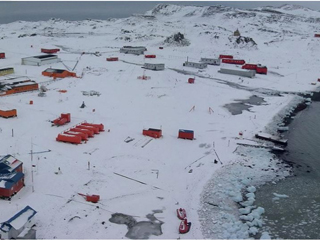Limitations of Arctic Oil Spill Response

Whilst a range of response techniques have proven successful in laboratory and controlled field experiments in Arctic conditions, they are yet to be tested in a full-scale incident.
The remoteness, lack of infrastructure, and inhospitable environmental conditions in the Arctic mean significant logistical and operational challenges must be overcome. Equipment, vessels and personnel would need to be mobilised over potentially vast distances. Personnel would need to be trained not only in oil spill response, but also in extreme environment first aid and survival skills. Ensuring the comfort and safety of responders in Arctic conditions – which may include 24-hour darkness, extreme cold and exposure, and potentially dangerous wildlife – would require considerable planning.
Incident management and communications in the far North will pose further challenges to responders. Clean-up sites may be very remote, and clean-up may be protracted over many months given the extreme seasonality of Arctic environments. The storage, transport and disposal of oily waste can be a challenging and costly aspect of any oil spill response, but this is particularly relevant in remote areas with limited infrastructure such as the Arctic.
The first question to be addressed during contingency planning and following an incident in the Arctic will be: given the location, the time of year, and the environmental conditions, is it possible to respond? If it is possible to respond, the question of whether or not a response is necessary must be addressed, taking into account the sensitive ecological and socio-economic resources at risk. The issue of ‘reasonableness’ must also be considered in the context of ship-source pollution.
It is important to note that there is a discrepancy between the research and development that has been and continues to be undertaken, and the response technology that is commercially available. To date, research and development of Arctic response techniques has focused on crude oils, driven by the increase in exploration and production activities in the Arctic. However, over recent years ITOPF has attended an increasing number of spills of bunker fuels from non-tankers, highlighting the potential pollution risk associated with any shipping activity in the Arctic. Heavy fuel oils tend to be less dispersible than crude oils under any environmental conditions, and although they are designed and produced expressly for combustion, in-situ burning may not be possible under Arctic conditions.
